HVAC
The Magna has an early implementation of hydronic heating, that ties into the cooling system for the engine. The entire system takes approximately 22 gallons of coolant, and uses a series of circulation pumps to move the coolant around the coach, and pass it through heat exchangers that blow hot air into the living quarters at floor level, and basement around the water bay and holding tanks. The basement portion is on its own automatic thermostat, that turns on somewhere around 38F and off somewhere around 45F, though I’m not sure of the exact numbers. When the engine is not running, a Webasto diesel heater is used to heat the coolant as it circulates through the loop. We leave the system enabled for the water bay, but rarely use it for the living quarters.
The coach initially came with two 13.5K rooftop units with heat pumps, like many RVs. As they are very power inefficient, we initially reached out to a company called Cruise N’ Comfort to purchase two 48V DC air conditioning units that could run off our battery bank directly and provide cool air for the coach. We installed one unit in the living room, and one in the bedroom. The units were advertised as 12K each, but we were told that they could be turned up to 14K, via turning a set screw. We were sorely disappointed with them because as summer hit, we realized that even set to 14K, they noticeably underperformed the rooftop 13.5K units while operating just as loudly. Due to the extremely high cost and relatively poor overall cooling, we’re pretty bitter about the purchase, but kept the units installed instead of removing them. They do sip electricity when operating, but are probably better suited to the tiny, enclosed spaces like the vans they are primarily marketed for. We feel they were oversold and underdelivered, and it’s probably because the fans aren’t powerful enough to distribute the cold air in larger spaces. We added additional fans with mixed results, but decided to go another route for primary cooling.
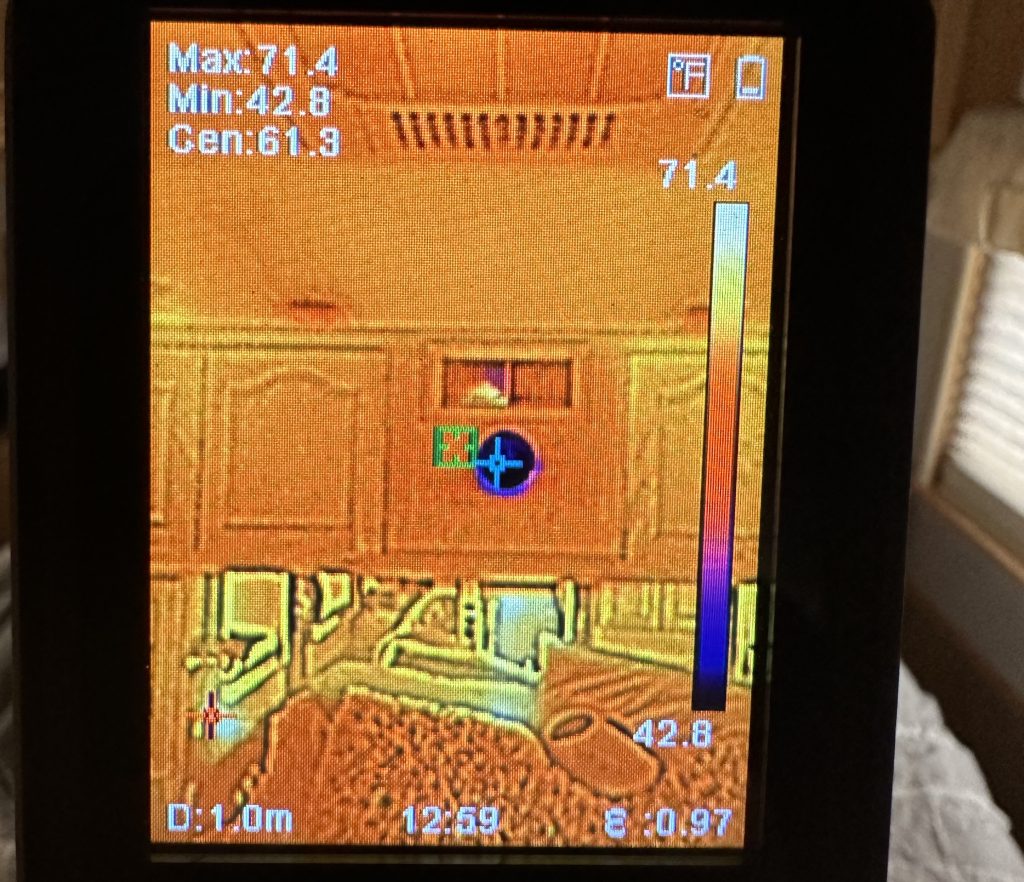
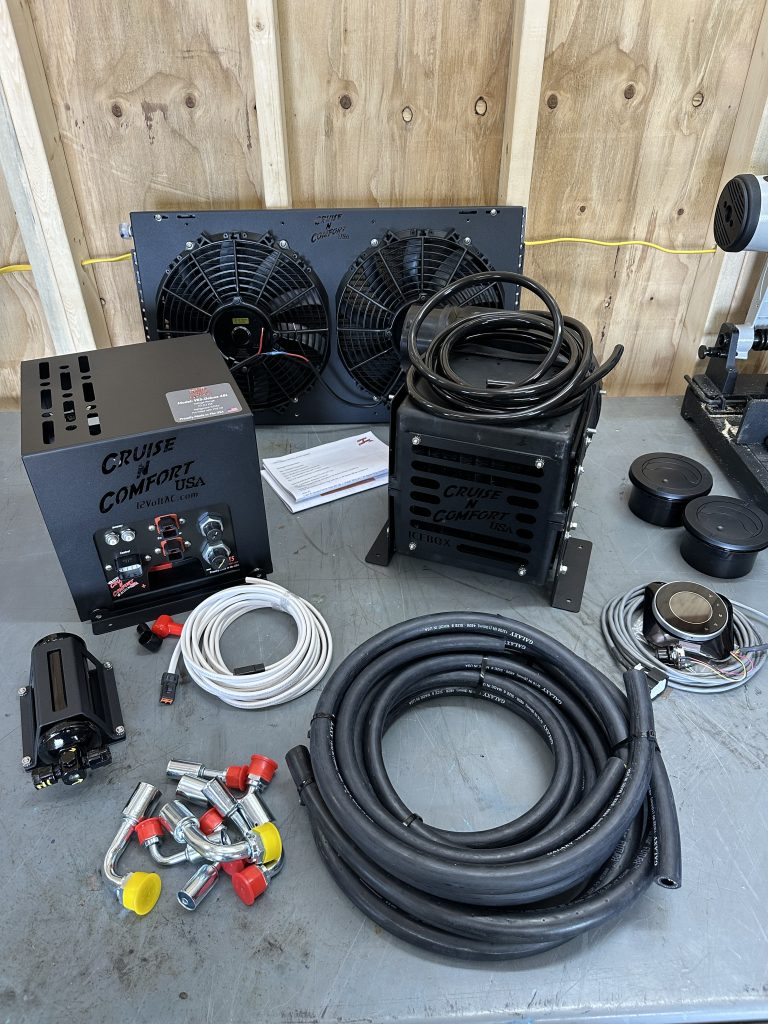
We installed a LG 30K ODU and two 15K wall units on our fifth wheel, and had great results with it. One of the reasons we went with the above system was to avoid the aesthetics of having an ODU on the outside of the motorhome since we couldn’t hide the ODU(s) in any of our storage bays. While we could use wall units in our fifth wheel, we have no suitable wall space in our motorhome, and had to consider rooftop cassettes and floor units as our only options. Rooftop cassettes are much larger than the cutouts for traditional RV AC units and require a lot of retrofitting, but we opted to go that route and put two ODUs high up on the rear of the rig so that the lines could be neatly tucked away under the solar panels.
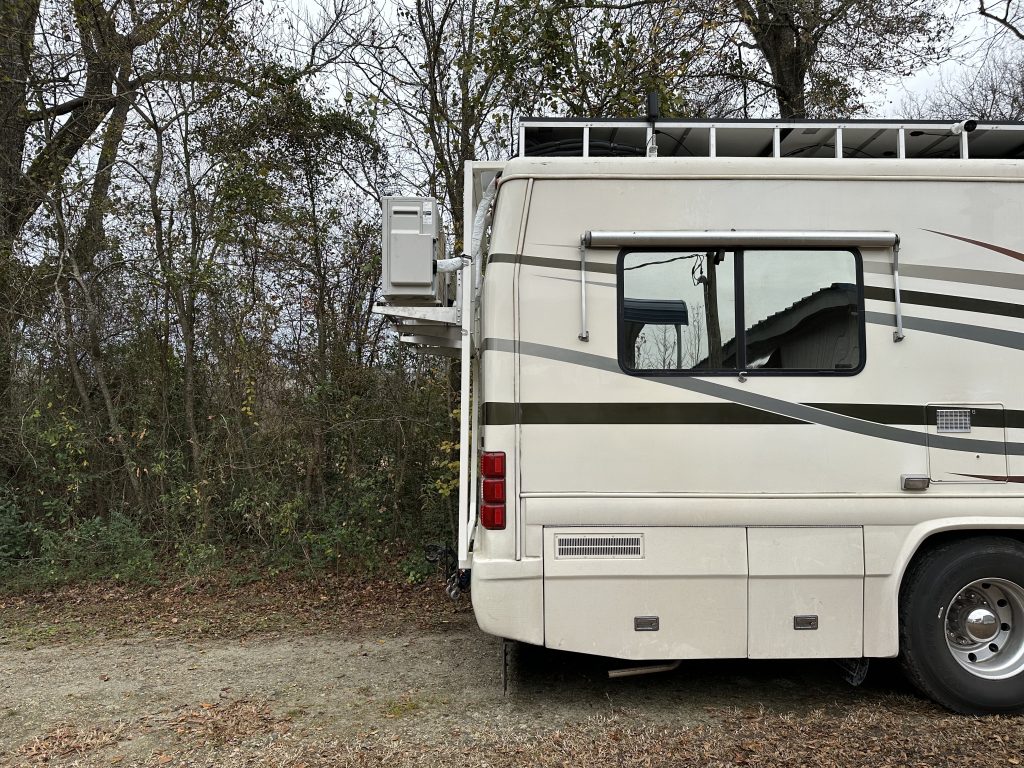
We decided to go with two ODUs for a few reasons, based on what we learned from the single larger ODU on the fifth wheel. First of all, large compressors can only turn down so far. An oversized unit means reduced dehumidification and more short cycling, and a larger minimum power draw when cooling requirements are small. Second, having two units means that we have redundancy and will retain a working unit if one happens to fail. A distant third reason is that with two units, I could avoid components that are centered on the rig (such as the backup camera) and have a arguably better aesthetic than a single larger unit. At the end of the day, you have a large AC unit or two hanging off the back of the coach, but I believe ours came out cleaner than most others I’ve seen. There are a few smaller benefits too, like being able to run some units on heat and some on cooling at the same time – we often use this to maintain 60F in the living area (heating) while trying to maintain 60F in the bedroom (cooling), because the bedroom tends to get much warmer than the living room at night.
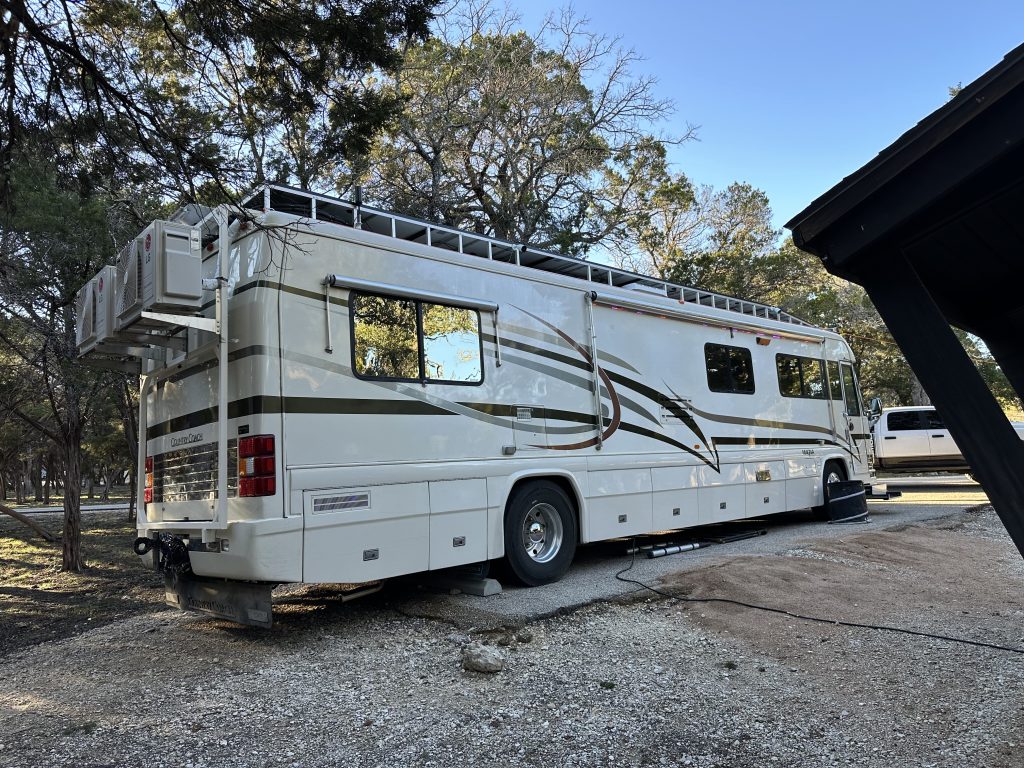
I built a rack out of 2×2 1/8″ steel and anchored it to the bumper via two 2×4 3/16″ stubs mounted to the frame horns via 6×8 1/2″ angle. The top is mounted to the roof in much the same way as the base rails for our solar rack, but with an independent set of 4′ rails and a homemade rubber bushing designed to allow about 1/2″ slop in any direction for flexing. I used off the shelf stainless ODU mounts to ease installation, with Loctite red on every fastener. I’m 175lbs and can do pull-ups on the ODU mounts with the units mounted, and there is no visible deflection.
The line sets were ran along the roof under the cross braces for the solar rack, and a 1″ PVC condensate pipe ran at a slope from the front to the rear of the bus. The condensate pumps from the rooftop units drop into the condensate pipe and currently just drain down the back – we may look at collecting this for certain purposes later on.
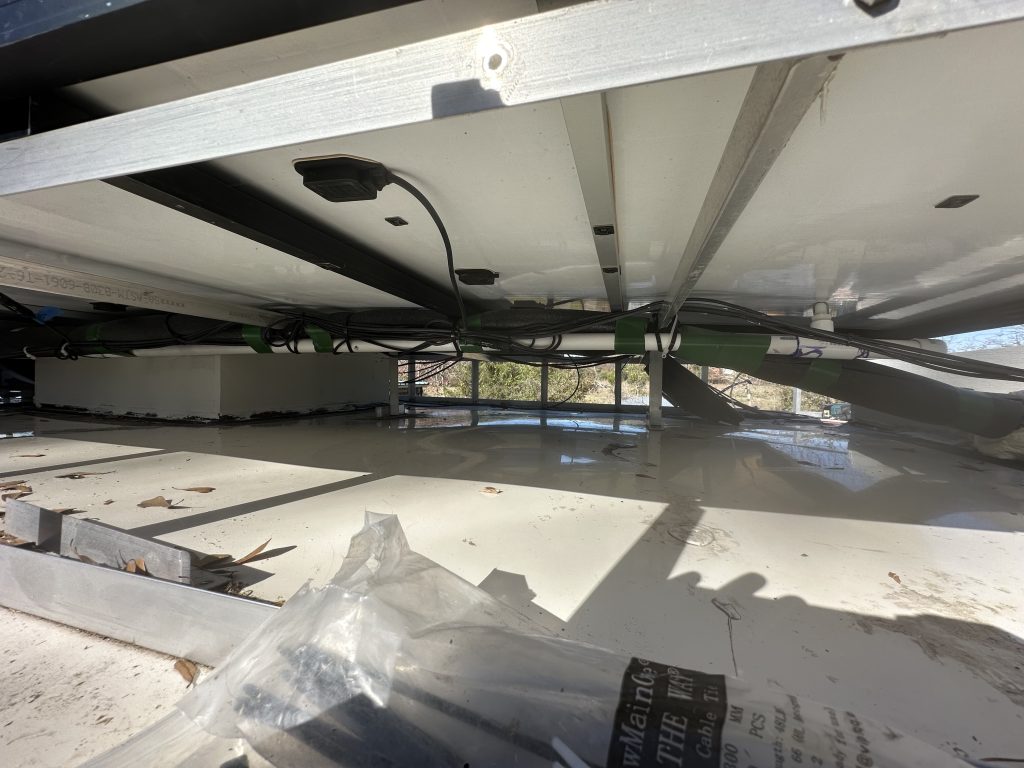
For IDUs, we went with an 18K unit up by the windshield to compensate for the massive heat load of single pane glass in the summer (we also use a Magne Shade; all our windows are double pane, and walls fairly well insulated) and 12K units mid-ship (galley) and in the rear bedroom. The middle and rear units are on one ODU, while the front unit shares an ODU with a 9K wall unit mounted in the inverter/battery bay in the basement. We enlarged the cutouts in the ceiling and built boxes over them.
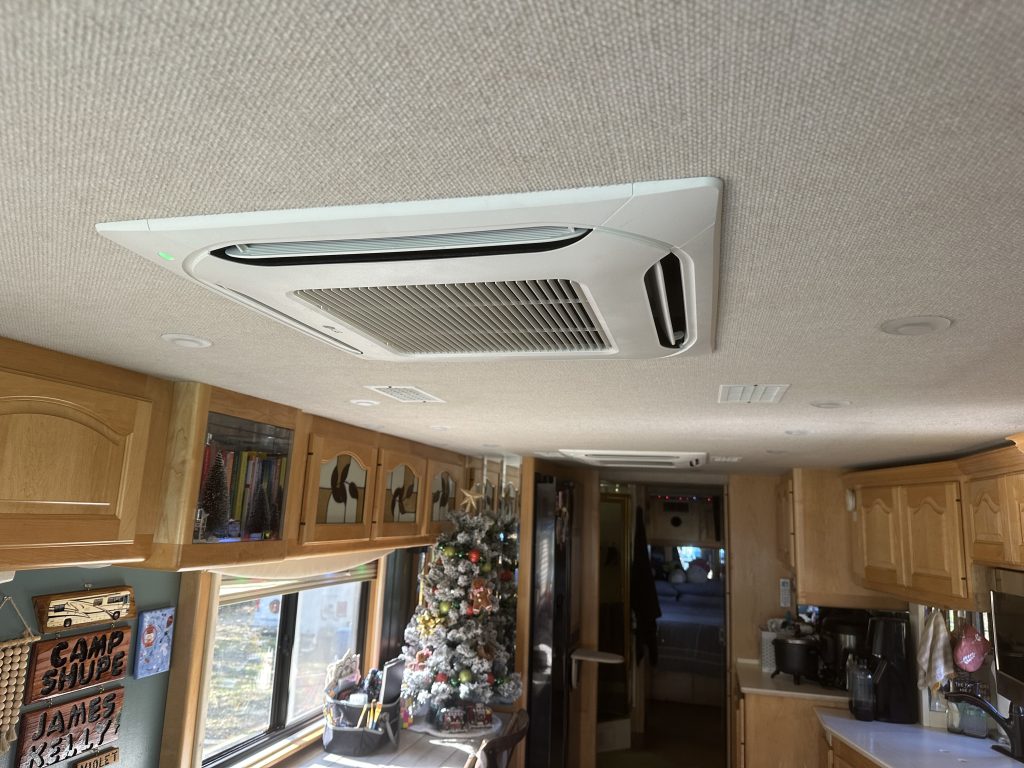
Having eliminated the RV rooftop units and replacing them with mini-splits, we can cool the rig to the same temps in the same conditions, using about a third of the energy. Additionally, we have much more cooling capacity for extreme conditions, as the two original rooftops would struggle as temps got near triple digits. The new units are much quieter, provide heating and cooling into much cooler temperatures, and are overall much better than any rooftop RV units you can buy, even today.
Quick summary:
- 2x Cruse N’ Comfort custom 48VDC mini-splits, 14k BTU each
- 2x LG LMU243HV 24K outdoor condensers
- 2x LG LCN128HV4 12K ceiling cassettes (mid living and bedroom)
- LG LCN188HV4 18K ceiling cassette (front living)
- LG LSN090HSV5 9K wall unit (electrical/ battery bay)
